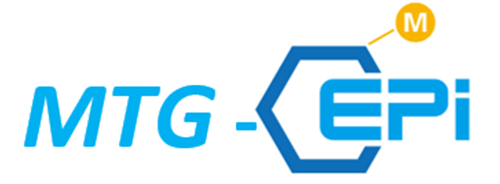Autism Gene Therapy: Reversing ASD with Base Editing
Introduction
Recent advances in genetic engineering have ushered in a new era of medical innovation, particularly in the realm of neurodevelopmental disorders. Among these, a cutting-edge technique known as in vivo base editing, pivotal in the field of Autism Gene Therapy, stands out for its potential to correct genetic mutations directly within the living brain. This method has recently demonstrated its efficacy in reversing behavioral abnormalities in mice with mutations linked to Autism Spectrum Disorder (ASD), offering a beacon of hope for therapeutic strategies aimed at genetic disorders.
The Basics of In Vivo Base Editing
In vivo base editing is a form of genetic editing that allows for precise alterations at the DNA level without the need to make a double-stranded break, which is common in traditional CRISPR-Cas9 methods. This technique involves the conversion of one DNA base into another, subtly correcting mutations while minimizing unwanted genetic disruptions.
The core component of this approach is a base editor, a fusion of a deactivated CRISPR-Cas9 enzyme linked to a base-modifying enzyme. This configuration enables the targeting of specific DNA sequences while the enzymatic portion carries out the conversion of the targeted DNA base into its correct form.

The Development of Base Editing Technologies
Evolution from CRISPR-Cas9: The journey from traditional CRISPR-Cas9 to the nuanced approach of base editing marks a significant evolution in genetic medicine. CRISPR-Cas9’s initial promise was shadowed by its tendency to cause unintended genetic disruptions. Base editing emerged as a refined technique aiming to reduce these off-target effects by modifying the enzymes involved, thus allowing for single-base changes without creating double-strand breaks.
Mechanism of Action: At its core, base editing utilizes a deactivated (nicked) version of the Cas9 enzyme, fused to a deaminase enzyme. This fusion does not sever both DNA strands but instead induces a chemical change in one of the DNA bases. For instance, cytosine base editors convert cytosine to uracil, which is read as thymine, thus achieving a C to T or G to A conversion without significant DNA damage.
Groundbreaking Study: Correcting ASD-Linked Mutations
The Role of MEF2C in Brain Function: The MEF2C gene encodes a transcription factor crucial for brain development and synaptic function. Mutations in MEF2C are known to contribute to various neurodevelopmental disorders, including severe intellectual disability and autism spectrum disorders (ASD). These mutations disrupt the normal function of the MEF2C protein, leading to a cascade of developmental abnormalities in neural circuitry. This makes MEF2C a critical target in Autism Gene Therapy.
Experimental Approach to Correcting MEF2C Mutations:
The landmark study utilized the AeCBE base editor, a pivotal innovation in Autism Gene Therapy, specifically designed to target and correct the mutated base in the MEF2C gene. Researchers employed a viral vector to deliver this base editor directly into the brains of mice engineered to carry the human-equivalent ASD-causing mutation in MEF2C.
Outcomes of the Gene Editing:
Post-treatment observations showed that the corrected MEF2C gene restored normal protein levels throughout several brain regions. More importantly, the typical ASD-like behaviors exhibited by the mice, such as hyperactivity and antisocial tendencies, were reversed. This result not only demonstrates the efficacy of in vivo base editing in correcting behaviorally impactful genetic mutations but also highlights its potential to address the genetic roots of neurodevelopmental disorders directly within the brain, offering substantial hope for the future of Autism Gene Therapy.
Expanding the Application of Base Editing
Beyond Neurodevelopmental Disorders: The success of base editing in neurodevelopmental models opens the possibility for its application in other genetic disorders. Diseases such as sickle cell anemia, cystic fibrosis, and even certain forms of cancer could potentially be treated through targeted base editing, where specific mutations are corrected in situ.
Enhancing Delivery Methods: A significant barrier to the clinical application of base editing is the delivery method. Current approaches primarily use viral vectors, which can present challenges such as immune response and limited capacity. Research is ongoing to develop alternative delivery systems, such as lipid nanoparticles or non-viral vectors, which might offer safer and more efficient delivery of base editors to target cells.
Ethical and Regulatory Considerations
Navigating the Ethical Landscape: The power to alter DNA within the human brain poses not just medical but ethical, social, and philosophical questions. As we advance our capabilities in genetic medicine, it is crucial to engage in broad, inclusive discussions on the implications of such technologies. Regulatory frameworks will need to evolve in tandem with scientific advancements to ensure ethical standards are upheld in the application of these powerful tools.
Public Engagement and Policy:
Effective policy-making in genetic editing will require robust public engagement to understand societal values and concerns regarding genetic modification. Transparent, informed conversations can help guide the ethical deployment of base editing technologies.
Conclusion
The successful application of in vivo base editing to reverse ASD-related behaviors in a mouse model represents a monumental step forward in the field of genetic medicine, particularly within the realm of Autism Gene Therapy. As researchers continue to refine this technology and address the ethical, safety, and delivery challenges, we move closer to a new era of medical interventions that can fundamentally alter our approach to disease and disability. This evolving landscape of genetic medicine not only promises revolutionary treatments in Autism Gene Therapy but also demands a careful consideration of the ethical dimensions of altering the very blueprints of life.
This detailed exploration of in vivo base editing not only broadens our understanding of its scientific and therapeutic dimensions but also underscores the complexity of its implications for future medical practices, especially in the context of treating neurodevelopmental disorders like autism.
Reference
Li, W.-K., Zhang, S.-Q., Peng, W.-L., Shi, Y.-H., Yuan, B., Yuan, Y.-T., Xue, Z.-Y., Wang, J.-C., Han, W.-J., Chen, Z.-F., Shan, S.-F., Xue, B.-Q., Chen, J.-L., Zhang, C., Zhu, S.-J., Tai, Y.-L., Cheng, T.-L., & Qiu, Z.-L. (2024). Whole-brain in vivo base editing reverses behavioral changes in Mef2c-mutant mice. Nature Neuroscience, 27, 116–128. https://doi.org/10.1038/s41593-023-01499-x
Recent Blog Posts
-
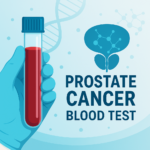 13 Jun 2025MTL Epitherapeutics and RI-MUHC Develop Early Prostate Cancer Blood Test
13 Jun 2025MTL Epitherapeutics and RI-MUHC Develop Early Prostate Cancer Blood Test -
 11 Jan 2025EpiAge Research Publication Signals a New Era in Understanding Biological Aging
11 Jan 2025EpiAge Research Publication Signals a New Era in Understanding Biological Aging -
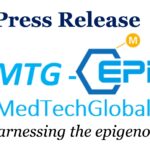 18 Nov 2024EpiMedtech Global Announces FDA Registration of EPIAGE, the First Epigenetic Age Test Registered by the FDA
18 Nov 2024EpiMedtech Global Announces FDA Registration of EPIAGE, the First Epigenetic Age Test Registered by the FDA -
 18 Nov 2024EpiMedTech Global Validates Unique epiCervix HPV Combo Test for Cervical Cancer Detection
18 Nov 2024EpiMedTech Global Validates Unique epiCervix HPV Combo Test for Cervical Cancer Detection -
 31 Oct 2024HKG epiTherapeutics’ MetaGen Genetic Risk Assessment Test Receives FDA Registration, Now Available in the U.S.
31 Oct 2024HKG epiTherapeutics’ MetaGen Genetic Risk Assessment Test Receives FDA Registration, Now Available in the U.S. -
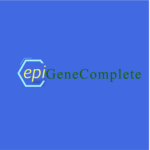 31 Oct 2024EpiMedTech Global Launches epiGeneComplete: A Breakthrough Genetic and Epigenetic Test for Comprehensive Health Diagnostics
31 Oct 2024EpiMedTech Global Launches epiGeneComplete: A Breakthrough Genetic and Epigenetic Test for Comprehensive Health Diagnostics -
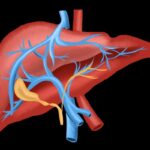 30 Oct 2024Enhanced Early Detection of Liver Cancer
30 Oct 2024Enhanced Early Detection of Liver Cancer -
 08 Oct 2024Are Microarrays Still Reliable? How Next-Generation Sequencing Outperforms Traditional Methods
08 Oct 2024Are Microarrays Still Reliable? How Next-Generation Sequencing Outperforms Traditional Methods
